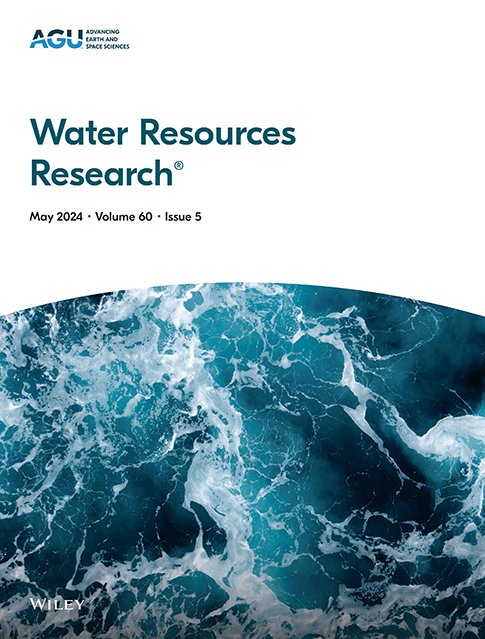淡水微塑料的生物介导絮凝:外聚物附着物微藻的作用
IF 4.6
1区 地球科学
Q2 ENVIRONMENTAL SCIENCES
引用次数: 0
摘要
透明的外聚合物颗粒(TEPs)是提高微塑料絮凝性能的关键材料。然而,定量评估TEP对絮凝过程的影响并在絮凝模型中解决这些影响是具有挑战性的。本研究以三种不同TEP水平的淡水微藻(Scenedesmus sp.、Aulacoseira granulata和Melosira varians)为研究对象,在混合室中研究MPs的生物介导絮凝过程。结果表明,3种微藻均显著提高了絮凝效果,絮团粒径显著增大(单因素方差分析,p值<;0.001)在较晚的孵育期(12、16、20、24和30天),与早期孵育期(6天和9天)相比,当TEP产生较低时。观察到一个临界TEP浓度(0.42 mg/L),超过该浓度,TEP产量的进一步增加对絮凝过程的影响微乎其微。在所选择的微藻中,场景藻- mps混合物的絮团生长速度快于肉芽金针藻和杂色金针藻。此外,提出了一个修正的种群平衡方程模型,将TEP浓度与微塑性浓度之比纳入到聚合和最大比生长速率参数中。修正后的模型表明,当MP浓度一定时,絮团生长速率和平衡平均粒径与TEP浓度有关,与实验数据吻合较好。修改后的模型说明了模拟微藻和MPs之间的外聚合物驱动的相互作用的潜力,并为生物介导的絮凝机制提供了见解。本文章由计算机程序翻译,如有差异,请以英文原文为准。
Bio-Mediated Flocculation of Freshwater Microplastics: Effects of Microalgae With Exopolymer Attachments
Transparent exopolymer particles (TEPs) are crucial for enhancing the flocculation of microplastics (MPs). However, quantitatively evaluating the influence of TEP on the flocculation process and addressing these effects in a flocculation model are challenging. In this study, three freshwater microalgae (Scenedesmus sp., Aulacoseira granulata, and Melosira varians) with various levels of TEP production were incubated to investigate the biologically mediated flocculation process with MPs in a mixing chamber. The results revealed that the three microalgal species significantly increased flocculation, with floc size increasing notably (one-way analysis of variance, p value < 0.001) at later incubation periods (12, 16, 20, 24, and 30 days), compared with the early incubation periods (after 6 and 9 days), when TEP production was lower. A critical TEP concentration (0.42 mg/L) was observed, beyond which further increases in TEP production had minimal effects on the flocculation process. Among the selected microalgae, the Scenedesmus sp.-MPs mixture presented a faster floc growth rate than Aulacoseira granulata and Melosira varians. Furthermore, a modified population balance equation model was proposed to incorporate the ratio of the TEP concentration to the microplastic concentration into the aggregation and maximum specific growth rate parameters. The modified model revealed that the floc growth rate and equilibrium mean size are dependent on the TEP concentration when the MP concentration is fixed, which is in good agreement with the experimental data. The modified model illustrates the potential to simulate exopolymer-driven interactions between microalgae and MPs and provides insights into the mechanisms of bio-mediated flocculation.
求助全文
通过发布文献求助,成功后即可免费获取论文全文。
去求助
来源期刊

Water Resources Research
环境科学-湖沼学
CiteScore
8.80
自引率
13.00%
发文量
599
审稿时长
3.5 months
期刊介绍:
Water Resources Research (WRR) is an interdisciplinary journal that focuses on hydrology and water resources. It publishes original research in the natural and social sciences of water. It emphasizes the role of water in the Earth system, including physical, chemical, biological, and ecological processes in water resources research and management, including social, policy, and public health implications. It encompasses observational, experimental, theoretical, analytical, numerical, and data-driven approaches that advance the science of water and its management. Submissions are evaluated for their novelty, accuracy, significance, and broader implications of the findings.
 求助内容:
求助内容: 应助结果提醒方式:
应助结果提醒方式:


